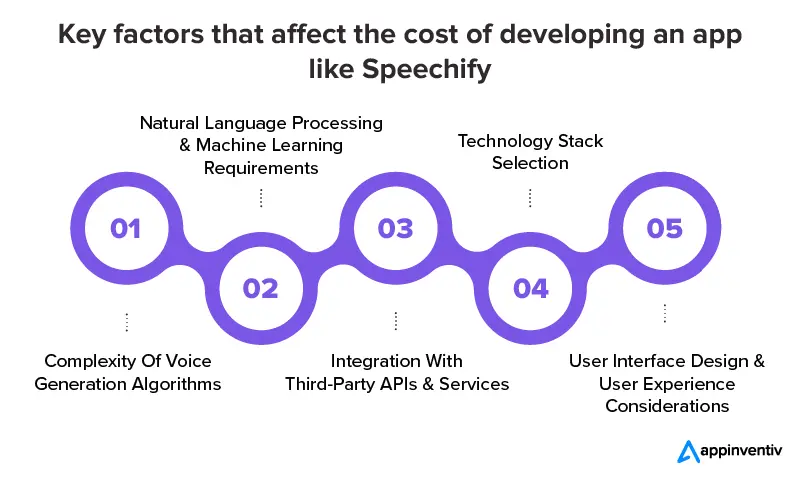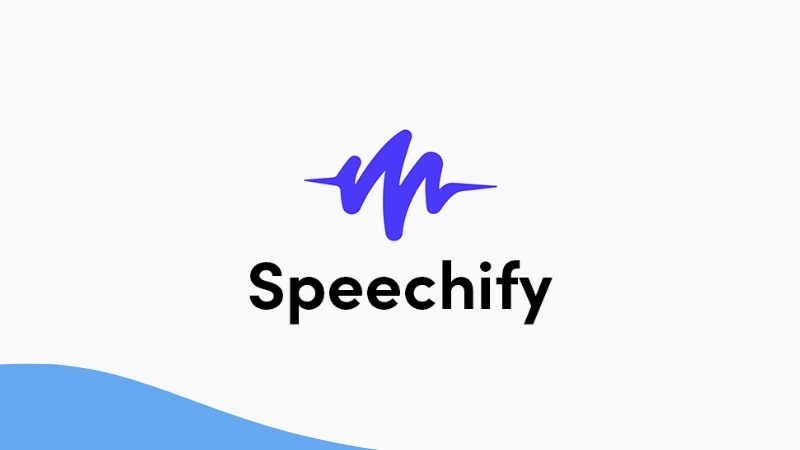Speechify is an artificial intelligence-powered text-to-speech and audiobook app that allows users to convert written content into professional quality audiobooks. The app uses advanced speech synthesis technology to generate natural sounding voice narration, making it easy for anyone to listen to books, articles, documents, and more in audio format.
In this detailed article, we will explore exactly how Speechify works and the technology behind it.
Speechify is a popular text-to-speech app, but it may not be the best option for everyone. If you are looking for a more affordable or feature-rich alternative, check out our post on Speechify Alternatives. Want to learn more about Speechify and how it can be used? Check out our post on All You Need to Know About Speechify.
Overview of Speechify

Speechify was created by Anthropic, an AI startup based in San Francisco. The founders set out to build an app that makes audiobook creation accessible and efficient for everyone.
Here are some of the key features and capabilities of Speechify:
- Text-to-Speech – The core function of Speechify is converting text into human-like speech using advanced AI voices. Users can input text from ebooks, word documents, websites, etc. and Speechify will narrate it.
- Natural Voice Quality – Speechify uses state-of-the-art neural text-to-speech technology to generate voices that sound expressive and natural rather than robotic. The voices are modeled after real human speakers.
- Customization – Speechify offers controls for adjusting voice speed, pitch, intonation and more to fit a user’s preferences. Users can choose from dozens of male and female voice options.
- Audiobook Creation – Speechify makes it simple for anyone to create audiobooks from ebooks, articles, or other texts. The generated audio can be exported as MP3 files.
- Playback Options – Speechify includes features to make it easier to listen to generated speech. This includes an automatic sleep timer, playlist creation, chapter navigation, variable speed playback and more.
- Cross-Platform – Speechify is available as a mobile app for iOS and Android devices as well as a web app so users can access it across platforms. The app syncs progress across devices.
Now that we’ve covered the key capabilities of Speechify, let’s take a deeper look at how the technology works behind the scenes.
Speech Synthesis Technology

The core artificial intelligence technology that powers Speechify is called neural text-to-speech (TTS). This refers to using deep neural networks to convert written text into natural sounding human speech.
Here is an overview of how Speechify’s neural TTS system works:
- Text Processing – The first step is to process the input text using natural language processing algorithms to analyze and understand the content. This includes breaking down sentences into individual words and detecting punctuation.
- Text Normalization – Next, the text is “normalized” into a standard spoken form. This involves expanding numbers and abbreviations (like converting “100kg” to “one hundred kilograms”), detecting homographs, and formatting the text for speech.
- Text-to-Phoneme Conversion – The normalized text is then converted into phonemes which are the individual speech sounds that make up spoken words. This process is called phonetic transcription.
- Waveform Generation – Using the sequence of phonemes as input, Speechify’s neural network then predicts the raw audio waveform that matches the phoneme sequence. It generates human-like speech waves.
- Post-Processing – Finally, effects like pitch, speed, and emphasis are added to make the speech sound even more natural and polished.
The key that makes Speechify’s voice quality stand out compared to earlier TTS systems is the use of deep neural networks for each stage of the process. These AI models are trained on huge datasets of human speech data to learn how to generate extremely natural sounding voices.
Speechify uses multiple different neural network architectures including recurrent networks, convolutional networks, and Transformer networks. Some specifics of the models are proprietary to Anthropic. But in simple terms, the deep learning models analyze patterns in real human speech and learn to replicate those patterns when converting new text into audio.
Over time, as Speechify collects more data and trains its AI on larger datasets, the voice quality, accuracy and naturalness continues to improve.
Customizing Speechify Voices

One of the handy features of Speechify is the ability for users to customize the text-to-speech voices based on their preferences. Let’s look at some of the ways speech can be tailored:
- Voice Selection – Speechify offers a variety of male and female voices with different accents and languages to choose from including American English, British English, Spanish, French and more. Users can select the voice that they find most pleasant and fitting.
- Speed – The pace at which the audio is narrated can be sped up for quicker listening or slowed down to be easier to understand. Good for adjusting based on the complexity of the content.
- Pitch – The pitch and tone of the voice can be raised or lowered. This helps distinguish between different characters when narrating fiction.
- Emphasis – The emphasis or intensity of the words can be controlled to make the delivery more dynamic and engaging. Important words or phrases can be highlighted.
- Pauses – The pauses between sentences, paragraphs and sections can be lengthened or shortened to improve flow and listenability.
- Vocal Range – Controls allow adjusting the vocal range from more monotonic and flat to more lively with variation.
- Intonation – The intonation and rhythm of speech can be tailored to sound more natural and human-like.
These customizations allow users to really personalize the listening experience and optimize the synthesized speech for the content being narrated. It helps maximize clarity and comprehension.
Speechify Use Cases
Now that we understand the technology behind Speechify, let’s look at some of the primary use cases and examples of how people are using the app:
Audiobook Creation
One of the most popular uses of Speechify is converting ebooks and other texts into DIY audiobooks. For avid readers or those with vision impairments, listening to books in audio format makes consuming literature much more accessible.
Rather than hiring professional voice actors, Speechify automates audiobook creation so anyone can turn an ebook into an audiobook within minutes. The app handles text formatting, chapter segmentation and more.
Listening to Articles
Beyond books, Speechify is great for listening to digital articles on blogs, news sites, and publications. The app allows uploading articles or pasting text snippets to be narrated. It’s perfect for catching up on reading when you’re on-the-go multitasking.
Converting Documents
Speechify can convert documents like PDFs, Word files, text snippets and other business documents into speech. It’s helpful for absorbing information-dense reports or papers when reading is not feasible. The custom voices are more natural than computerized screenreaders.
Accessibility
For those with visual impairments or reading disabilities like dyslexia, Speechify can read text aloud and serve as an accessibility tool. The ability to tailor speed, tone and emphasis aids comprehension.
Learning Assistance
Listening to educational content on Speechify can aid learning and retention compared to reading alone. It frees the eyes to take visual notes while the material is read aloud. Useful for students studying.
Entertainment
Speechify isn’t just educational, it can provide entertainment as well. The app can narrate fiction stories, podcast transcripts, jokes, or social media threads in a lively, engaging way.
Translation
Speechify offers multilingual text-to-speech. This allows translating content into other languages like Spanish and listening to it spoken conversationally. Helpful for learning pronunciation and retention.
As you can see there are many applications for Speechify. The advanced speech technology makes synthesizing natural, human-quality audio accessible to anyone.

Speechify Pros and Cons
Let’s summarize a few of the key advantages and disadvantages of using Speechify based on its capabilities:
Pros
- Generates extremely natural sounding speech from text
- Easy to use and fast audio conversion
- Works for books, articles, documents and web content
- Customizable voices and playback speed
- Can tailor pitch, tone, cadence and emphasis
- Saves time compared to reading or traditional audiobooks
- Useful accessibility tool for the visually impaired
- Multi-platform access across devices
Cons
- Requires an internet connection to function
- Limited free version, paid subscription required for full experience
- AI narration lacks emotion compared to human voice actors
- Not suited for highly technical or data-dense content
- Customization tools take some learning and experimentation
- Audio generation quality dependent on input text quality
While the technology still has room for improvement, Speechify removes much of the friction around audio content creation. For many everyday use cases, its synthesis quality is nearly indistinguishable from human narration. The pros generally outweigh the cons for casual users.
The Future of Speechify
Speechify was already highly capable when it launched in 2019, but Anthropic continues to refine the technology to push boundaries. Here are some innovations we may see in the future:
- Wider selection of realistic natural voices in more languages
- Ability to clone and customize celebrity voices
- More fine-grained speech customization for pronunciation, dialect, etc.
- Tools for automating audio production e.g. sound effects, intros, background music
- Integration of other modalities like video generation from scripts
- Emotional intelligence for more meaningful and nuanced delivery
- Generating audio from bullet points rather than full text
- Summarizing long content into condensed audio briefings
Many of these enhancements leverage broader advances happening in artificial intelligence. As AI voice and language models grow more sophisticated, apps like Speechify will continue to improve.
The vision is for Speechify to become an indispensable multimedia assistant – able to ingest information, repackage it in digestible audio form, and deliver it to you whenever and wherever you need it. We are getting closer to that reality every day.
FAQs about Speechify
Here are answers to some frequently asked questions about Speechify:
How accurate is the voice transcription?
Speechify uses state-of-the-art neural text-to-speech, so most of the time its transcription is highly accurate with only minor errors. Performance depends on the input text quality.
How does Speechify differ from other text-to-speech apps?
Its main advantage is the human-like voice quality generated using AI models trained on enormous datasets. The results sound significantly more natural than earlier robot-sounding text-to-speech.
Can Speechify narrate PDFs and image scans?
Unfortunately Speechify cannot directly process PDFs or images. The content needs to be in a text format like Word, ebook, or on a website to be transcribed. PDFs can be converted to text using optical character recognition.
Does Speechify work offline?
No – Speechify requires an active internet connection to generate audio through the cloud. However, you can download narrated files for offline playback once created.
What languages does Speechify support?
Currently Speechify supports several major languages including English (US, UK, Australian accents), Spanish, German and French. More languages are being added over time.
Conclusion
In summary, Speechify provides an easy way for anyone to convert written content into natural-sounding audiobooks using AI text-to-speech technology. It processes text input, analyzes it using linguistic algorithms, converts it into speech waveforms with neural networks, and allows customizing pitch, speed and emphasis.
Key benefits are saving time, improving accessibility, enabling multitasking while listening, and making absorbing information easier. Use cases range from books and articles to documents and website content. While the technology still has room to improve, Speechify makes high-quality audio narration accessible to the everyday user.
With advances in deep learning and speech synthesis, the capabilities of Speechify and apps like it will only grow over time. We can expect even more realistic voices and finer customization in the future. Audio content creation is being democratized, allowing us to listen to virtually any text. The possibilities for how we consume information are rapidly expanding thanks to artificial intelligence.

